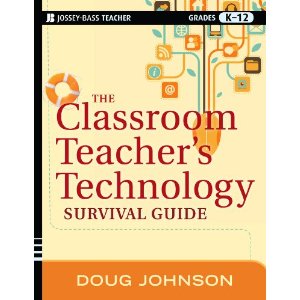E-Musings
E-Musings
Head for the Edge, September 1996
As I write this, the distant computer which holds one of my e-mail accounts has been down for nearly a week. The folks who run it are using a school break to do some spring house cleaning, and I am suffering from withdrawal.
I have had this account at the local university for over three years now. My status of “adjunct of the last resort” got me the access, but it was at least 6 months before I began to regularly read and send e-mail using the mainframe computer’s primitive mailing program. It was primarily the wonderful postings to LM_Net (which at that time came in about the same volume that its digests come) which really got me hooked. While I now use my school district account for the bulk of my daily work, I still get most of the e-zines and listservs I’ve read for a long time on this broken university account. I feel out of touch.
E-mail has served our district well in the two years it has been available to the staff. We started with Internet e-mail, and it quickly became amazingly popular. Teachers and administrators who had never had much use for a computer before, found e-mail to be the “killer app” that made learning to use technology worthwhile. Of our 400 staff members, about 250 currently are subscribed to our district’s listserv, and many more than that use e-mail. Our new superintendent is an avid e-mail user, as are nearly all our building principals. We’ve used the district’s listserv to distribute teaching ideas, conduct surveys, pass on news, and ask for help. The board secretary sends e-mail announcing when the newest school board minutes have been posted to our Web site. Several committees now use only e-mail to distribute information.
As I’ve watched and helped teach educators to use e-mail, a pattern of growth emerges. I believe if a trainer can determine where a user is on this “taxonomy” of e-mail use, better assistance can be offered.
1) Personal use. Many of our teachers got interested because they had a child (often in college), friend or professional colleague who had an e-mail account. The personal nature of the correspondence made using the computer compelling enough to begin mastering its basic operation. Beginning users need recipe type instruction lists and hand-on classes. And not just on using the e-mail program, but also about general computer operations like opening applications and files, text-editing, mousing, and even keyboarding. Folks, this is why you need to budget LOTS of time for “e-mail” instruction.
2) Conducting school business. Using e-mail for certain tasks is becoming a standard operating procedure in schools where the resources are adequate. Once all teachers have networked computers on their desks, the school bulletin, departmental information, class attendance reporting, team-planning, and parent communications can all be effectively done electronically. Even steady users may need help understanding netiquette, finding and deciphering addresses, creating personal mailing lists, organizing and storing e-mail, and attaching other files to messages. One of the skills users seem most grateful for being taught is how to determine if a bounced message is caused by a faulty address or by network problems.
3) Obtaining information. Educators soon find that there is a wealth of information which can be obtained using their e-mail accounts. Discussion lists, electronic magazines and journals, and daily quotes, jokes, and vocabulary words can keep the reader current on almost any topic. But it is easy for e-mail users to be overwhelmed by the shear volume of mail as well. This level of e-mail use calls for instruction in finding addresses for e-zines and listservs, practice subscribing and unsubscribing to mailing lists, and suggesting techniques for filtering and selecting mail. Another kind of netiquette -listserv rules and practices - needs to be purposely taught to most users as well. It doesn’t have to be the college of hard knocks that teaches about dealing with flames, spammimg, and appropriate language.
4) Creating classroom activities. Good teachers can’t keep a good thing to themselves. As many classroom teachers get excited about how e-mail has provided them with new learning opportunities, they will be anxious to get their students using this resource productively. At this level of the taxonomy, teachers need advice and techniques and ideas about managing student e-mail accounts, acceptable use policies, and ideas for curriculum integration. Finding other teachers who want to be involved interactive projects across the district or across the world is exciting, but also difficult. Keypal projects require planning and ground rules for success. Teachers need access to Judy Harris’s wonderful book The Way of the Ferret (ISTE, $29.95) and Al Roger’s exciting Global Schoolhouse Network web site <http://www.gsn.org/> and its HILITES mailing list.
By learning to use e-mail effectively, teachers have at their finger tips the aggregate knowledge and experience of thousands of other professionals. It is nothing less than learning to access the work’s first organic database - the first database which can provide wisdom, not just facts to its users. This is why our district has spent a good deal of effort creating a critical mass of e-mail using staff members.
By the way, we are also training the nearly four thousand 6th through 12th grade students who have their own e-mail accounts in our district as well!





Reader Comments